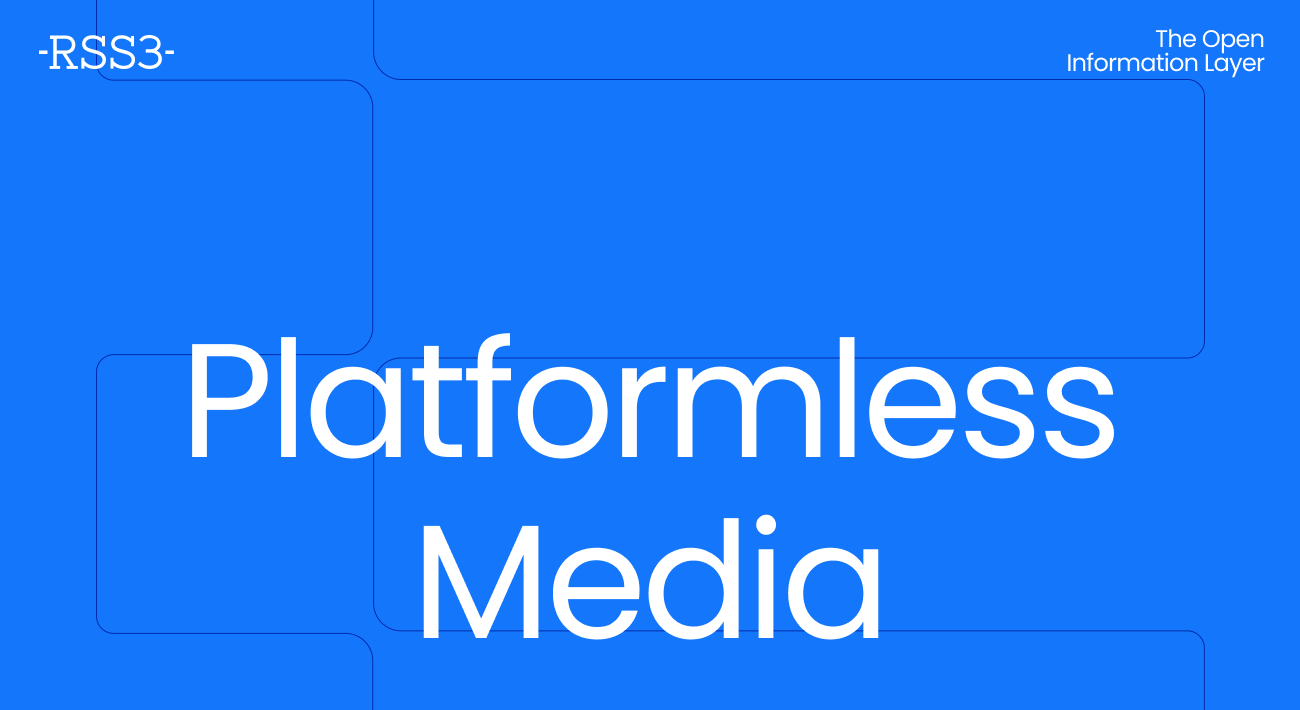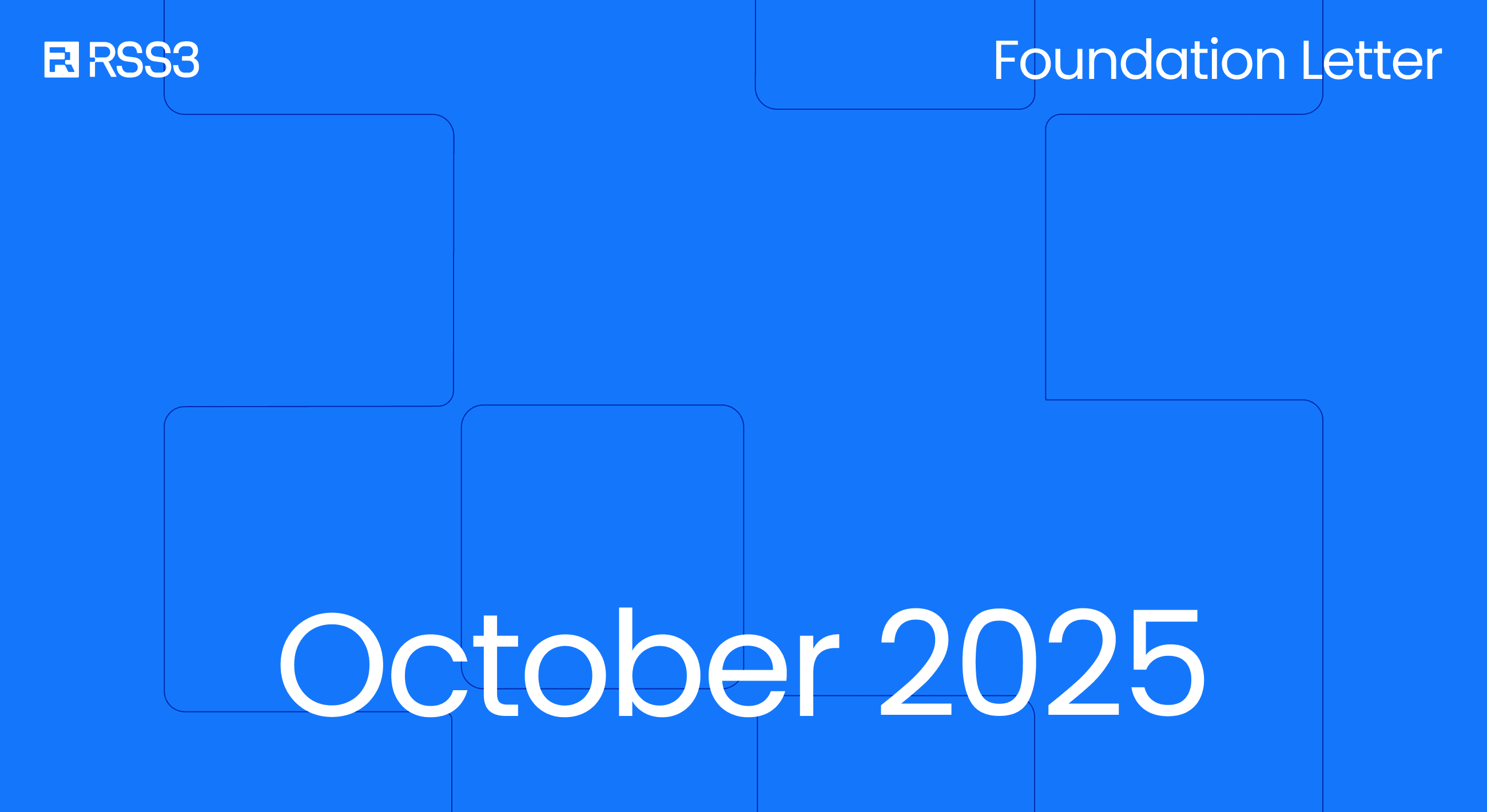Media in the internet era has been all about platforms. If anyone tries to start gathering focus and influence by creating contents, no matter if it's your grandma or NYTimes, they need to start by thinking about what platform they want to start with. You want to shoot funny videos? Then TikTok is your place. You want to write something showing your political point of view? Then Twitter is the place to go. But wait. What if you want your short videos to show on Snapchat and have their users see them and subscribe to your contents? You have to go to Snapchat, start a separate account there, and do it from scratch. And what if you write, say, or show something TikTok, Twitter, or Instagram don't like? Well, that's easy - they just delete that content. If it's too much beyond the line, then your account will be banned — it means that all your contents, all your subscribers, and all the effort behind them are gone right after they hit that button.
Let's stop there and think about it. What is the ultimate logic between content creators and users? If we go to the most fundamental level here, there will be only two things: contents and channels. Contents are the things creators produce that will draw interest from users. And channels are the distribution logic that shows users the contents they want to see, which also means sending contents to users whom creators want to connect. In the scenario above, we see how platforms are taking these two most fundamental elements of any social media and controlling it under their autocracy. Yeah, I know that's how the world works, at least for now. But let's once again back to the track; what is the most ideal social media ecosystem? To put it simple:
① Creators should be entitled to the right to control every bit of their content. If you like to post something, you post it. If you like to edit something, you edit it. If you like to delete something, you delete it.
② Every user should have the right to control what channels to use and where they want to use these channels.
With that in mind, we imagine a different way how media works in the future. You start with any application or "platform" without worrying about content form, application popularity, or different policies. You simply start making contents and users from all around the world across all different applications can just see your content, interact with it, and become your followers. If, for any reason, you don't want to use the first app you started with anymore, just take your identity and go to another app; everything you have and every fan you gathered will just be in the new place. YOU, no longer the platform, will be the one in control.
This is how media becomes platformless: you will definitely still be working and interacting through apps, but they cannot kidnap you and your data anymore. They are just applications, not platforms.
Here, I have a diagram showing the current platform-centric or centralized system.

This basically shows how platform holds and, of course, controls all contents and channels, which is basically what caused the above problems.
Here, I also have a diagram for a user-centric or distributed system.

In this model, we can see how creators will be controlling their contents, and how users will be controlling their channels or subscriptions. That is, creators fully control what to write, and users fully control what to see. Platforms will disappear, leaving a place for different applications to compete with users with different user experiences.
It is noticeable that both creators and users are considered users, which is becoming more and more common since everyone tends to create some content in these years on social medias. A distributed social media has a diagram like this:
Everyone has his/her/it/their own contents and channels, and they control all of them. Still, in order for this thing to work, we need applications. Just as stated before, these applications will be competing with the same set of data but with different user experiences.
Under this scenario, we can see how users will be the ones in control. But there are problems when we rule out platforms.
Platforms are not just evils; they have their values, and that's why they survived and thrived in the Web 2.0 era. Normally, with the hope or the fact of gaining more profit, they do three things:
- They build good products
- They cover costs for the system
- They promote certain services
This is very straightforward. A platform is generally created by a company, starting with people investing some types of capital: founders usually invest their time and effort, and investors usually invest money. They share the risk of losing everything while also sharing the possibility of establishing a platform with a strong network effect, which will bring significant profit afterward. Generally, they will have to build a good product, pay for it, and promote it to more users. So, they do deserve rewards to some extent.
We have to be clear that users won't choose a service simply due to the fact that it is centralized, decentralized, or distributed. At least, that is not how users think now or in the near future. So in order for a distributed system to have massive adoption, we can't expect less work than what a centralized platform does. Fundamentally, we will still need an economic incentive that will align different types of investments from different stakeholders: a drive that encourages better product(s), a way to cover necessary costs, especially when the system costs more than it makes, and rewards for everyone that spreads the word.
This will be the challenge we, who aim to build a distributed system, all face fighting against centralizations.
Stay tuned!



